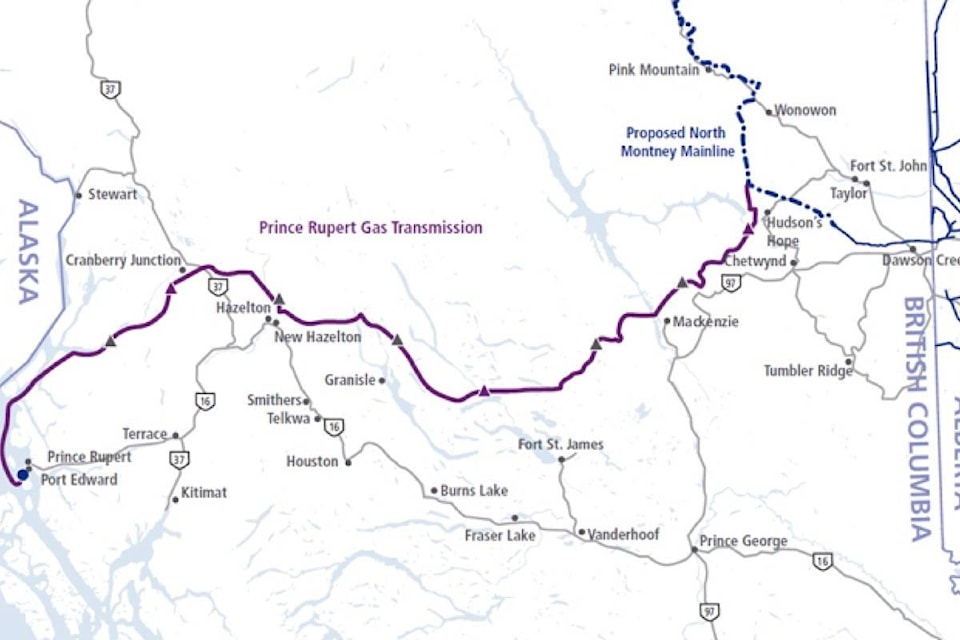The BC Energy Regulator (BCER) is facing escalating legal challenges over its approval of the Prince Rupert Gas Transmission (PRGT) pipeline, with Indigenous groups and frontline communities accusing the agency of bypassing crucial environmental assessments and dismissing local concerns.
A coalition of community organizations, including the Skeena Watershed Conservation Coalition, Kispiox Valley Community Centre Association, and the Kispiox Band, has initiated a judicial review against the BCER and PRGT. Represented by Ecojustice lawyers, the coalition argues that the regulator failed to adhere to its own rules by approving construction without conducting a new cumulative effects assessment, as required by the project’s permits.
"This is not just a matter of regulatory oversight; it's a question of environmental and social justice," said Kolin Sutherland Wilson, Chief Councillor of Kispiox Band. "The BCER is showing a dangerous disregard for the rule of law and the well-being of our communities."
The decade-old environmental assessment for the pipeline is set to expire in November. The coalition contends that significant changes over the past 10 years—including alterations to the project plan, pipeline route, and affected communities—should have compelled the BCER to enforce its permit requirements and conduct a new cumulative effects assessment.
They also highlight that worsening climate impacts and continued industrial development in northern B.C. have increased the vulnerability of sensitive ecosystems and endangered species, including salmon and caribou.
The BCER maintains it has completed its due diligence on the cumulative effects assessment for section 5B of the pipeline, which lies entirely within Nisga'a lands. However, the regulator adds, no other section has been approved.
"Construction cannot commence in any other permitted sections of the pipeline route until the permit conditions are met for those sections. The conditions for the other permits (sections), including the requirement for a cumulative effects assessment, have not been completed for the remainder of the sections."
The 1.2-metre diameter PRGT pipeline is intended to transport natural gas across Northern B.C. to the West Coast for export as liquefied natural gas (LNG). The project, a joint venture between the Nisga'a Nation and Western LNG, has been controversial from its inception, with critics warning of its environmental and social impacts.
Meanwhile, Gitanyow hereditary chiefs have taken a more confrontational stance against the pipeline. Last week, they symbolically burned a benefits agreement signed a decade ago with TC Energy, the pipeline's previous owner, during a blockade on a remote service road, underscoring their growing frustration with the project and the regulatory process.
"They're not welcome here," said Gamlakyeltxw (Wil Marsen), a chief of the Ganeda Clan, who participated in the blockade. "Our community was not given the full information to make an informed decision, and now we're standing up to protect our land and our future."
Despite the opposition, Western LNG spokesperson Rebecca Scott confirmed that construction would proceed as planned, with trucks rerouting to avoid the blockade.
"We respect the rights of free speech and peaceful assembly," Scott said. "But this demonstration will not deter us from moving forward with the project."
The pipeline's environmental assessment certificate, initially issued in 2014 for a route connecting to the now-cancelled Petronas LNG export facility near Prince Rupert, was extended in 2019 for five years.
This certificate, expiring in November, requires the Nisga'a-Western LNG partnership to demonstrate that the project has been "substantially started." Originally planned to stretch across northern B.C. and turn south to Port Edward, the route now heads north at the Gasoga Gulf, up the Portland Inlet to supply the proposed Ksi Lisims facility near the Nisga'a village of Gingolx.
Kathy Clay, president of the Kispiox Valley Community Centre Association, representing about 200 area residents, is concerned about the route's impact on freedom of movement, property security, personal safety, and access to essential services like grocery stores, medical care, and emergency response.
“The concerns of the Kispiox Valley residents have not been acknowledged, much less addressed, by government or industry regulators,” she said.
Both the legal action and the grassroots opposition are driven by shared concerns that the decade-old environmental assessment is outdated and inadequate.
"The BCER's failure to enforce its own permit requirements is not only unlawful but also puts the environment and local communities at serious risk," said Matt Hulse, an Ecojustice lawyer representing the coalition.
As resistance to the project intensifies, the Gitanyow are considering further legal action against the Province of B.C., with growing community support. At a recent "Pipeline Impact Meeting," attended by more than 300 people, community members raised over $3,500 to fund legal efforts aimed at securing an injunction against the pipeline's construction.
- with files from Harvin Bhathal

